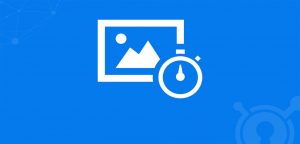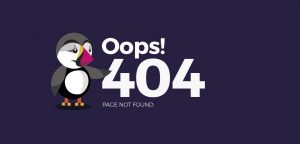10 Best Practices to Optimize your Website Speed

Website page performance and speed are essential to the user experience. If your site takes ages to load, you will lose not only visitors but also potential customers.
Several good search engines such as Google consider the website’s speed into account for search rankings. Therefore, webpage optimization is a critical factor for overall performance.
When they say ‘every millisecond counts,’ they mean it. According to stats, a one-second delay in page load time yields:
● 7% loss in conversions
● 111% fewer page views
● 16% decrease in user satisfaction
This is why a few extra seconds can significantly influence your capability to engage visitors and generate sales.
How To Optimize Website Speed? – Ten Key Points For Better Results
Improving web performance is not a piece of cake for the majority of businesses. This is not something that one can do on its own. You need an expert’s expertise to see the change in your productivity.
However, the following Ten pointers are of great help if carried out correctly. Have a look:
Use CDN – Content Delivery Network
Using CDN can significantly enhance your website speed. How?
A content delivery network consists of a set of web servers spread across numerous geographical locations. These servers provide content to end users according to their location.
On the contrary, if you have a single server, all user requests are sent to the same hardware. It results in a rush! The time required to process every request increases, which increases the load time, and ultimately, the webpage optimization is affected.
Simultaneously, if you were using CDN, each user request is directed towards the nearest server. Consequently, the content is delivered faster, and the website works quickly.
Get A Better Host For Your Website

Web performance optimization also depends upon the type of hosting you have for your website. There are possibly three types of hosting available; they are:
- Shared Hosting:
The cheapest way to get your website online in a short period and that too for a low fee – get Shared hosting! With this type of hosting, you can share disk space, RAM, and CPU with other sites that also use this server. Thus, this is the main reason why shared hosting isn’t as fast as different hosting types.
- Virtual Private Servers (VPS) Hosting:
VPS is much faster hosting than Shared. It uses various servers for content distribution. VPS is the optimal solution for your eCommerce site. It better deals with the traffic spikes by sharing the server with its other users and, in comparison, keeping a part of the virtual server for yourself so that your configurations do not influence other clients.
- Dedicated Server:
To get your physical server, try a dedicated server. It may be an expensive hosting option, but you can have it on your premises. You need to pay a server rent and hire a system administrator for its maintenance. Moreover, you can also rent a dedicated cloud resource from Microsoft Azure, AWS, Google, or another public cloud provider.
The best benefit of a dedicated server is that all resources belong to you only, and you get full control of them.
Optimize The Size Of Website Images

If you are wondering how to improve website loading speed by enhancing the size of images on the website, read carefully.
To get a successful eCommerce site, images play a vital part. They improve engagement as everyone loves eye-catching and alluring photos and graphics.
They are a good option for presentation, but usually, images are large files that slow down a website’s speed. Therefore, it is compulsory to reduce their size without compromising the quality. You can accomplish that with the help of JPEGmini, Kraken, or ImageOptim.
If this method does not suit your, try HTML responsive images <secret> and <size> attributes to adjust image size.
Reduce Plugins
One of the website optimization techniques includes reducing the number of plugins. Plugins are standard parts of every website. They add specific features that third parties suggest. The more plugins you install, the more resources you need to run them.
Consequently, the website works slower, and sometimes security issues can arise. That is why we recommend checking all plugins and deleting unnecessary ones.
Firstly, run performance tests on your page to find out which plugins are slowing down the website. Not only the number of plugins decrease website speed, but quality also affects performance. The best solution is to keep only the necessary ones and avoid plugins that load many styles and scripts or produce a lot of database queries.
Minimize CSS Files And JavaScript Abundance
When your website visitors want to access particular files, it leads to HTTP requests. If your website contains many JavaScript and CSS files, these requests slow down your website. However, if you reduce the number of CSS files and JavaScript, it will undoubtedly speed up your website.
By grouping, all CSS files and JavaScript into one can reduce the overall number of HTTP requests. You can use Script Minifier, Grunt, WillPeavy tools to achieve the goals.
Use Website Caching
Caching is the process of storing the existing version of your website on the hosting and presenting this version until the website is updated. In case many users are accessing your page at one time, servers work slowly and need more time to deliver the web page for each user. And caching makes sure the web page does not render over and over for each user.
To optimize website speed, website caching depends on the platform your website is developed. For instance, if you use a dedicated or VPS server, you can set up caching under your general settings. However, in the case of a shared server, website caching isn’t usually available.
Implement Gzip Compression
One of the questions that most people frequently ask is ‘how to speed up a website.’ Well, they may get the answer now. With the help of Gzip compression, you can achieve this. It is an effective way to reduce the size of the files. Gzip compresses the files before sending them to the browser.
It minimizes the HTTP requests and reduces the server response time. This method is an effective way to work with all the files on your website.
Database Optimization In CMS
Why is Database Optimization necessary? If you use a content management system (CMS) packed with complex plugins, your database size increases, and your website works slower. When this is the situation, database optimization is an effective way to enhance performance.
For example, the CMS stores comments, blog posts, and other information that takes up a lot of data storage. So, each CMS requires its optimization measures. For instance, you may consider WP-Optimize for WordPress.
Reduce Web Fonts Usage
Web fonts have become famous in website design. However, the use of web fonts harms the speed of page rendering. These fonts add extra HTTP requests to external resources.
With the help of the following measures, you can reduce the size of web font traffic:
- Include character sets that are used on the site
- For modern browsers, use modern formats such as WOFF2.
- Choose only the required styles.
Detect 404 Errors and Reduce Redirects

A 404 error means that a ‘page is not found.’ The hosting, search engines, or browsers provide this message when a page’s accessed content no longer exists.
Therefore, it is essential to detect and correct a 404 error, which can be done by detection tools and plugins.
But, as mentioned earlier, additional plugins affect your website speed negatively. Henceforth, it will be beneficial if external tools are used for error detection. If you are looking for those tools, try using 404 Redirected Plugin for WordPress, Google Webmaster Tools (GWT), and Sleuth.
After detection, it is necessary to assess the traffic that they generate. If these links no longer bring visitors and thus do not consume server resources, then leave them as they are. However, if these pages still have some traffic coming, then consider setting redirects for external links. Fix the link addresses for the internal ones and get your website back on track.
Wherever you hear HTTP requests, it means website performance is affected by some action. In this case, it is the number of website redirects that create HTTP requests.
It is best to either keep them to a minimum or eliminate them. How can you do that? Firstly, run a site scan to identify the redirects on your page. For this purpose, the screaming frog is the best option as it quickly identifies the redirects.
After that, check if they serve a necessary purpose and leave only the serious ones.
Key Takeaway
Website performance and speed are essential for optimal results. Several factors affect functionality. However, there is a solution for every situation. Following these practices can significantly help your eCommerce site performance.

Leave a Reply